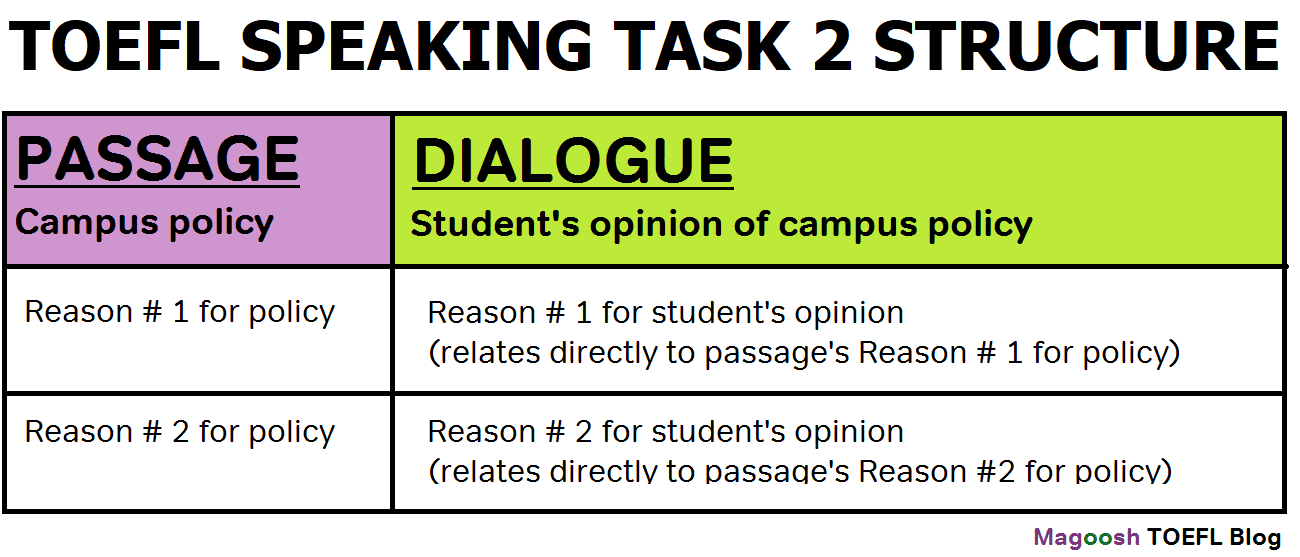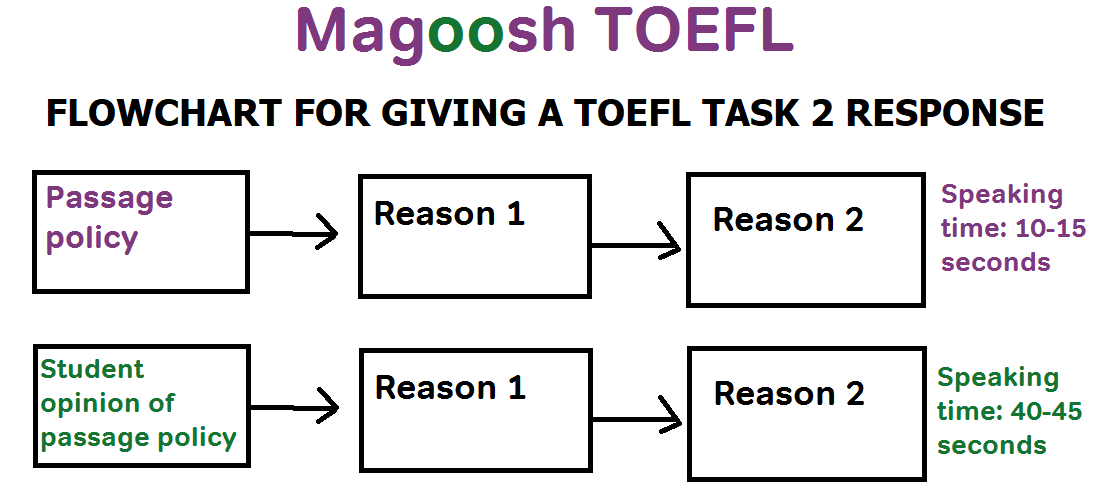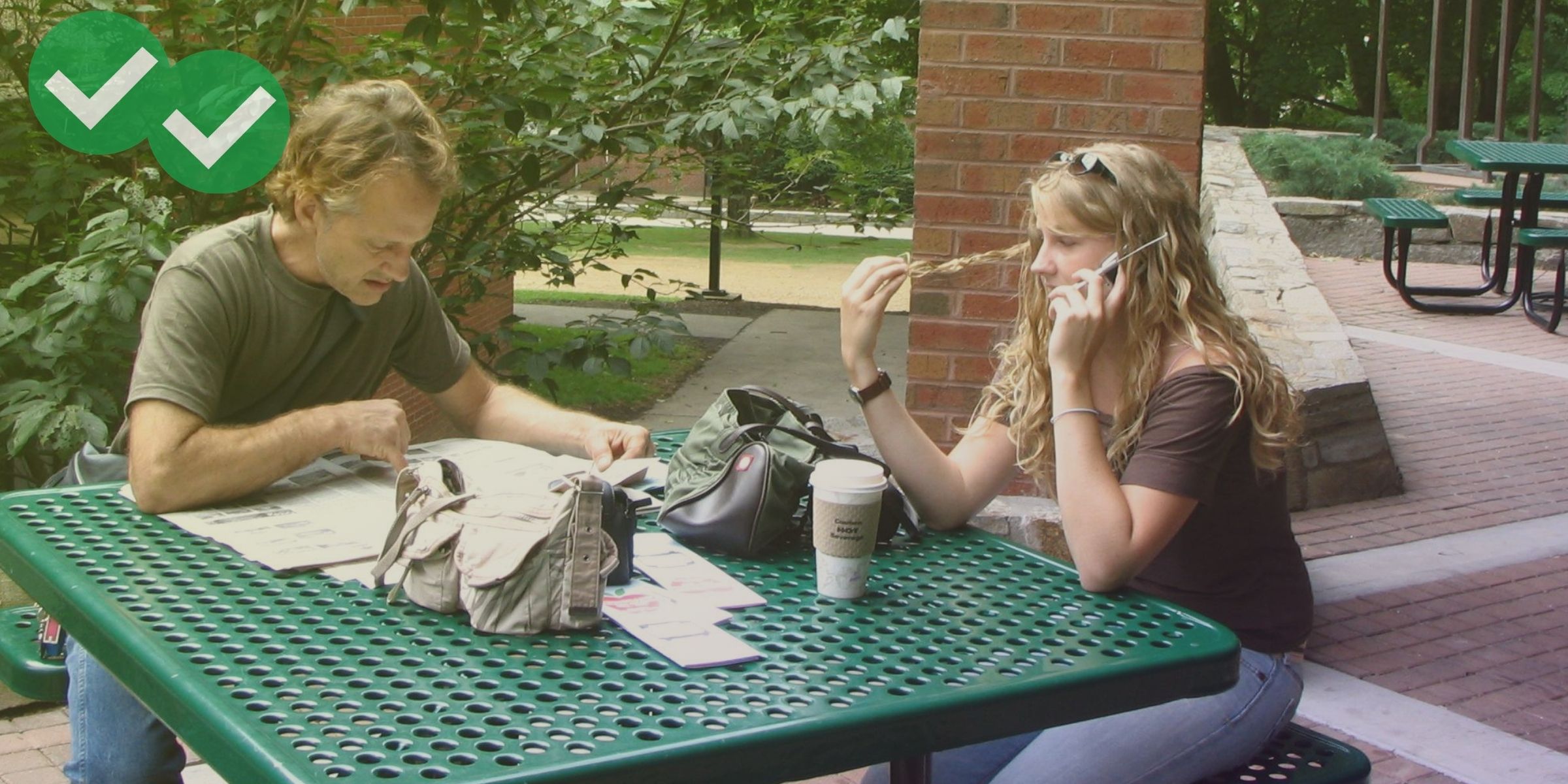
The TOEFL Speaking Task 2 prompt is complicated! The passage proposes a policy, with detailed supports. Then a speaker gives an equally detailed response.
In an earlier post, we took a detailed look at the structure of Speaking Task 2. This structure can also be summarized in the following table:

So what we have here is a written campus policy supported by two details, followed by an audio conversation that has a student opinion supported by two details. In the conversation audio, the student’s opinion will connect directly to the policy from the passage. And both of the reasons the student gives to support his or her opinion will connect directly to a corresponding supporting detail in the passage.
Confused yet? Don’t be. Study the table above, and you’ll easily be able to visualize all the points and all the connections between the points. Next, I have another visual tool that can help you make sure you don’t miss a single point or connection when you give your response. With input from an Iranian Magoosh TOEFL student, I’ve created a flowchart-based template to help you visualize and organize your spoken response to this task.
The TOEFL Speaking Task 2 Template: A Flowchart with Two Paths
We’ve looked at the usefulness of flowcharts in TOEFL Speaking before. As I’ve mentioned, flowcharts are especially good for the TOEFL Integrated Speaking prompts that contain audio conversations (Task 2 and Task 5). TOEFL conversations are more complicated than TOEFL lectures — they have more than one speaker and are more spontaneous. Flowcharts can be a powerful way to visualize and mentally simplify this complexity.
The template my student and I created can help you visualize the information in a Task 2 prompt, seeing it as two parallel paths that have two similar “flows.” One path is the passage, with a stated campus policy that flows into two stated reasons for the policy. The second path is the audio track. Here, the student gives an opinion about the policy. The student’s opinion is parallel to the original statement of policy in the passage. The opinion flows into two reasons that the student gives for the opinion. These two reasons for the student’s opinion correspond to the passage’s two reasons for the policy.
But I’ve introduced it enough. 😉 Without further ado, here is the actual visual template for TOEFL Speaking Task 2:

How to use this TOEFL Speaking Task 2 Flowchart
On TOEFL Speaking, flowcharts are templates for your notes. Draw this template into your Speaking Task 2 notes. Take the information from a particular TOEFL Speaking Task 2 prompt and plug it into the fields in the dual flowchart template.
You don’t necessarily need to write down the recommended speaking times in your notes. But do be mindful of them. One of the easiest ways to lose points on TOEFL Speaking Task 2 is to spend too much time summarizing the passage. The focus of the task is restating the student’s opinion and reasoning. Make sure you have enough time to do that, while still including all important points from both the reading and the listening track.





